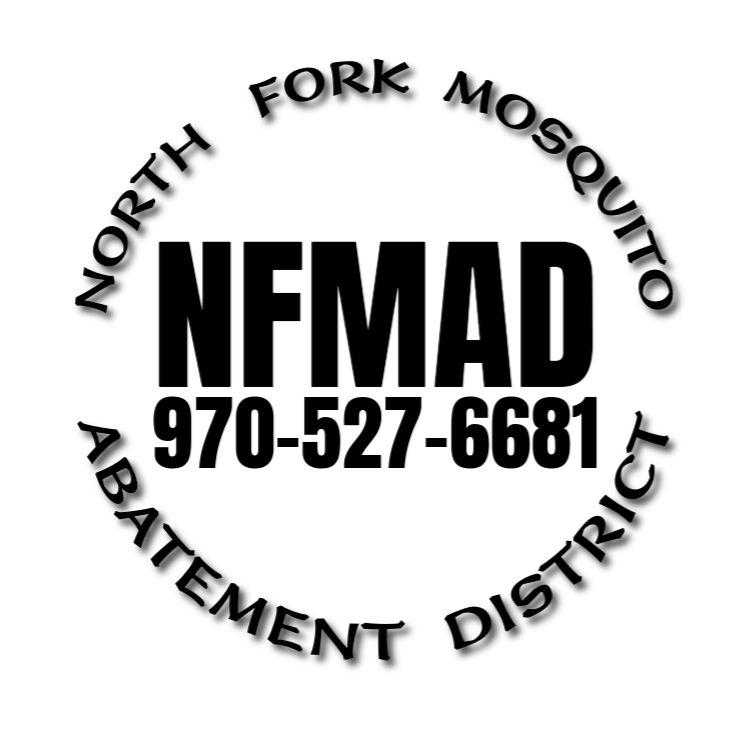Mosquito Control Products

Larvae and Adult Mosquito Control:
The District uses chemical control products when source reduction and biological control are not possible or efficacious. Chemical control of mosquitoes is often grouped into larviciding and adulticiding. Larviciding is a general term for the application of nonliving natural materials or synthetic chemical products to aquatic habitats to kill mosquito larvae or pupae or to otherwise prevent emergence of adult mosquitoes . Larvicides can be applied in a wide variety of formulations using a broad range of application technologies. Adulticides target adult mosquitoes. Chemical control efforts in the District are largely confined to larvicides, as they are the most effective means of control in the majority of breeding sources found in the North Fork Valley. Breeding sources treated for mosquitoes can include, but are not limited to, gutters, underground storm drains, marshes, mismanaged irrigation waters, etc. In certain habitats, such as along most of the river, larviciding and adulticiding are used to target larvae and adult mosquitoes.
LARVICIDE
ADULTICIDE
Calpar 80 ULV Oil SDS 2011 .pdfFyfanon ULV SDS 2021.PDFFyfanon EW Label.pdfPermaSease 30-30 SDS 2020.pdfPermaSease 30-30 Specimen Label.pdfReMoa Tri SDS 2023.pdfReMoa TRI Specimen Label 2024.pdfSunset ORT Oil SDS 2017.pdfSunset ORT Oil Specimen Label.pdfZenivex E4 RTU SDS 2021.pdfZenivex E4 RTU Specimen Label.pdf
BARRIER SPRAYS
Essentria IC Pro SDS 2022.pdfEssentria IC Pro Specimen Label.pdfEssentria Organic Specimen Label.pdfMavrik Perimeter SDS 2018.pdfMavrik Perimeter Specimen Label.pdfMosquito Magician SDS 2017.pdfMosquito Magician SpecimenLabel.webp
Bacillus thuringiensis israeliensis and Bacillus sphaericus:
Both of these microorganisms produce natural metabolic by-products that are only toxic to mosquitoes and show no toxic effects on organisms other than midges and buffalo gnats. The latter two groups of aquatic flies are considered pests, particularly buffalo gnats that are well known for their painful bites and human blood feeding habits.
The protein toxins produced by these two bacteria control mosquitoes by destroying (rupturing) the gut of the larva (wiggler). Once ingested, death usually follows quickly within 24 hours and sooner under ideal conditions. Unlike B. sphaericus, which remains in the water and regenerates from the corpses of dead mosquito larvae, Bti is short lived and only effective for one generation of control. Under suitable conditions, B. sphaericus can remain effective for several generations and even longer.
Recent studies have indicated that when Bti and B. sphaericus are combined, overall control is enhanced. Together, the Bti reduces natural resistance to B. sphaericus and at the same time extends the effective period of one application from 10 days to over three weeks. Unlike Bti, which is least effective in polluted water, B. sphaericus is unaffected by organics and therefore, preferred for controlling mosquitoes like the Southern House Mosquito (Culex quinquefasciatus), which breeds throughout Orange County in foul water situations (storm drains, catch basins, etc).
Methoprene:
Methoprene, a juvenile hormone mimic, and insect growth regulator (IGR) is an active ingredient in vector products. This products acts as a "natural hormone" of insects and effectively retards the completion of the life cycle of the mosquito. The IGR works by preventing the larva from transforming to the pupa (stage between the larva and adult) and/or the adult from emerging from the pupa. Methoprene is formulated in ways to provide both short and long-term control by one-time application mixtures and slow release presentations using granules and briquettes.
